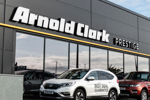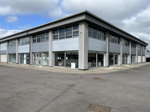The ‘pile them high, sell them cheap,’ philosophy was particularly prevalent during the first few years of this millennium, as certain car supermarkets were able to take advantage of new car imports, thanks to advantageous currency exchange rates. However, that particular bandwagon left town some while ago.
Unlike traditional franchised dealer businesses, car supermarkets are totally reliant for profitability on car sales and enhancements such as finance and warranties.
They do not normally derive income from workshops, bodyshops, parts, servicing, or vehicle hire, all streams available to franchised dealers. In main dealer world, if cars sales are quiet, then there are always other parts of the business to bring in income. But for supermarkets, if sales are quiet, then the business is under pressure.
Supply chain threats
Car supermarkets’ margins have been squeezed because of increased pressure to maintain sufficient car stock levels and optimum stock mix. Car supermarkets have no supply chain links with manufacturers. This means they can supply any make and model they can source.
But the downside is that when it comes to buying vehicles they have to compete with every other car retail operation, and in the case of car auctions, with private buyers.
Volume ex-rental cars – such as base model Corsa, Focus, Vectra – are always plentiful, but higher spec, ex-manufacturer models of these cars are offered to the dealer network before going to remarketing companies or auction, where the competition is higher, thus putting pressure on margins.
In addition, prestige brand cars have become harder to buy, which affects the car supermarket’s ability to stock a comprehensive model mix. More prestige manufacturers restrict their remarketing and disposal of ex demo/management cars at auction to their own franchised network.
Another obstacle to supermarkets has been that some manufacturers, including Mercedes-Benz and Ford, have opened their own factory outlet retail facilities in an bid to protect residual values. Others could follow.
#AM_ART_SPLIT#
Erosion of buying experience
As a result of the conflict between margin and volumes, some car supermarkets (but not all), have lost touch with the buying experience from the customers’ point of view. Most car supermarkets sell cars using one of the two following methods.
1. Price led. This is a fixed price, no negotiation approach. Great emphasis, and therefore pressure, is put on sales extras, i.e. finance, warranty, paint protection, etc. Little attention is paid to customer service/satisfaction levels and the buying experience tends to be well below par.
2. Process led. This is sometimes a very uncomfortable style of controlled selling, that customers in the main find very intimidating. In extreme cases customers have been known to sign an order, just to get out of the place, only to cancel the sale when they get home. Pressure is put on sales execs to get customers to deal and drive away on the same day.
The key financial drivers for the deal and drive method of selling are to assist with dealer cash flow. Retailers who push this selling technique are aware that if the customer goes away, “to think about it” they would almost never return.
Value vs price conflict
Irrespective of the purchase price that it ultimately pays, a car supermarket can only retail its stock at a price determined by competitor pricing and market forces. To maintain the adage of ‘pile high, sell cheap’ the unsuccessful supermarket will attempt to undercut, and therefore reduce margins even further.
Any business that relies solely on the lowest price as its USP, on such a macro purchase as a car, is destined for failure.
Successful car supermarkets tend to be entrepreneurial, owner/driver style businesses. However, paradoxically, the very characteristics that can make a car supermarket successful, is the main reason why the business will have a low, ‘sell on’ value to any prospective purchaser.
Succession management
Due to the independent, entrepreneurial nature of car supermarkets, the ones that achieve sustained and constant profitability, tend to be single site, where the owner/driver can concentrate on all aspects of the business without the dilution caused by more than one site.
Concentration on stock profile, stock mix, and ensuring an offering of pre-reg, nearly new and price range 2-3 year old used cars is paramount to the success of the business. There are a number of successful car supermarkets in the UK that operate and adhere to this model.
The spectacular crash, 10 years ago, of Car Group plc, trading as Car Supermarkets Ltd, was a classic and costly example of what happens when a plc or financial institution becomes involved in the fast moving, almost stocks and shares style of business that used car retailing can be. Since then, other franchised dealer groups have had a dalliance with the supermarket sector with little success.
Once an entrepreneurial style of business becomes encumbered with the bureaucracy that a plc group or financial institution brings with it, the business becomes sluggish and uncompetitive. Equally if the parent company doesn’t fully understand the business, it will put in place numerous controls and reports that have the same detrimental effect.
#AM_ART_SPLIT# Car supermarket vs main dealer
Advantages
Disadvantages













Login to comment
Comments
No comments have been made yet.